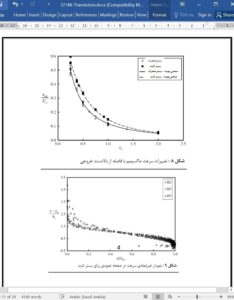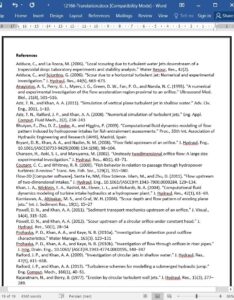Abstract
Flow behavior upstream of a circular orifice with the invert at the bed level (initially) is investigated under fixed bed and equilibrium scour (mobile bed) conditions. The experiments are performed under three different constant heads and sediment sizes. Longitudinal and vertical components of velocity are measured in the vertical and horizontal planes passing through the center of the orifice. The velocity decay upstream of the orifice (along the centerline of the orifice) is slower for the fixed bed case than for the unbounded orifice. Under equilibrium scour condition, the velocity decay transitions from the velocity profile for the unbounded orifice to the fixed bed condition. The longitudinal velocity profiles in the horizontal plane at different locations upstream of the orifice are found to be similar for both fixed and mobile bed cases. The longitudinal velocity profiles in the vertical plane are also found to be similar for each case. The maximum velocity is found to occur below the centerline of the orifice for both cases. The location and decay of maximum velocity with distance upstream of the orifice are quantified. A three-dimensional flow model is used to simulate the flow behavior upstream of the orifice under fixed bed and equilibrium scour conditions. The model accurately predicts the velocity field upstream of the orifice under both fixed bed and mobile bed conditions.
Introduction
Orifices are common appurtenances in hydraulic structures. Orifices near the base of dams may be used for hydropower generation, flow control, and/or sediment removal. Fish entrainment during hydropower generation is another major concern because it depends on velocity magnitude and acceleration field near the orifice (Coutant and Whitney 2000). Thus, studying the flow field upstream of orifices is of interest under variety of situations.
Conclusions
Flow behavior upstream of a circular orifice is investigated under fixed bed and equilibrium scour conditions. Three different sediment sizes are used. Three different heads over the orifice are used for the fixed bed case and for each sediment size in the mobile bed case. The proximity of the bed restricts the area through which the fluid can be withdrawn and changes the flow behavior upstream of the orifice. The maximum longitudinal velocity at any location upstream of the orifice for the fixed bed and mobile bed cases occurs below the center of the orifice, whereas it occurs along the centerline of the orifice for the unbounded orifice. By choosing suitable length and velocity scales, the longitudinal velocity profiles in the horizontal plane passing through the center of the orifice at different locations upstream of the orifice are similar for both fixed bed and mobile bed cases. The variation of length scale with distance upstream of the orifice is found to be linear for both cases, with velocity profile for the mobile bed case spreading faster than the fixed bed case.











